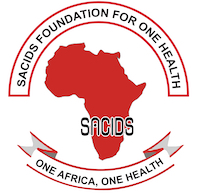Abstract
Brucellosis is a zoonotic disease of importance to both public health and the livestock industry. The disease is likely to be endemic in Tanzania and little is reported on molecular characterization of Brucella species in pastoral settings. This study aimed at characterizing Brucella species (targeting genus Brucella) infecting humans, cattle and goat in Kagera region (Ngara and Karagwe districts) using real‐time PCR, PCR amplification of 16S rRNA genes and Sanger sequencing. Brucella spp. were detected in 47 samples (19 sera and 28 milk) out of 125 samples (77 sera, 35 milk and 13 aborted materials) using real‐time PCR. All aborted materials (13 samples) were negative to real‐time PCR. Out of the 47 real‐time PCR positive samples (28 milk and 19 sera), 20 samples (10 milk and 10 sera) showed an expected 16S rRNA gene PCR product. Sequence analysis and blasting confirmed the presence of Brucella spp. in pastoral areas of Kagera region. The Brucella spp. from Kagera were phylogenetically grouped in two clades and three branches all closer to B. melitensis, B. abortus and B. suis from USA, Sudan and Iran. However, they were distinct from other species isolated also in USA, New Zealand, Germany and Egypt. This was expected based on the distance between the geographical regions from which the data (nucleotides sequences from 16S gene sequencing) for the phylogeny reconstruction were obtained. This is the first study to report Brucella species identified using 16S rRNA gene sequencing in East and Central Africa. A livestock vaccination program re‐inforced with a high index of Brucella diagnosis is needed to eradicate brucellosis in animals and minimize suffering from Brucella infections in humans in Tanzania.
https://doi.org/10.1002/vms3.298






